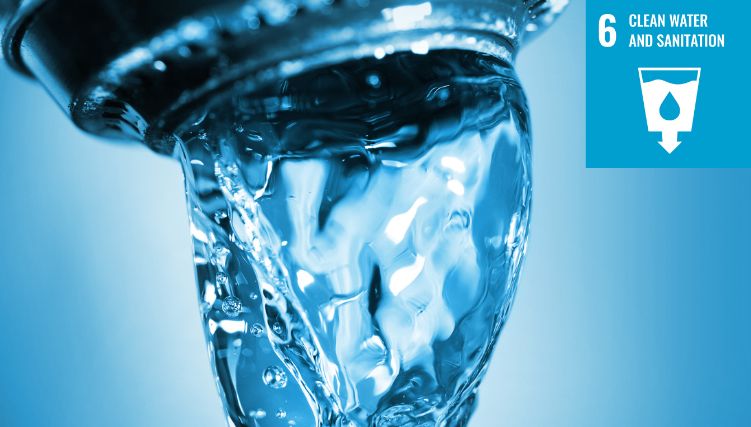UN SDG 6
UN SDG 6: Clean Water and Sanitation for All

Ever tried taking a shower without water? It's not very effective—unless you're a cat! SDG 6 is like the world's mission to fix all the leaky faucets and empty taps, ensuring everyone has access to clean water and proper sanitation. Imagine turning on the tap and getting... nothing. Not ideal, right? This goal is all about making sure every person can quench their thirst and, well, take care of business without any hiccups. It's the planet's biggest plumbing project, and everyone's invited to grab a wrench!
UN SDG 6 - International Treaties and Regimes
United Nations Sustainable Development Goal 6 (SDG 6) focuses on ensuring the availability and sustainable management of water and sanitation for all. This goal is underpinned by several international treaties and regimes that promote cooperation, protect water resources, and improve sanitation worldwide. Here is a description of 6 key international treaties and regimes that support UN SDG 6:
1. United Nations Convention on the Law of the Non-Navigational Uses of International Watercourses (UN Watercourses Convention) – 1997
The UN Watercourses Convention provides a framework for the use, management, and protection of international watercourses. It promotes equitable and reasonable utilization of shared water resources and obliges states to cooperate on issues related to transboundary watercourses to prevent conflicts and ensure sustainable use.
Best website to learn about the UN Watercourses Convention:
United Nations Treaty Collection: UN Watercourses Convention Overview
UN Watercourses Convention User’s Guide: UNWC Online User's Guide
2. The Convention on Wetlands of International Importance (Ramsar Convention) – 1971
The Ramsar Convention is an international treaty for the conservation and sustainable use of wetlands. Recognizing the vital role of wetlands in water purification, flood control, and as habitats for biodiversity, it encourages the designation of wetlands of international importance and promotes their wise use.
Best website to learn about the Ramsar Convention:
Ramsar Convention Official Website: https://www.ramsar.org/
Ramsar Sites Information Service: https://rsis.ramsar.org/
3. Protocol on Water and Health to the 1992 Convention on the Protection and Use of Transboundary Watercourses and International Lakes – 1999
This protocol aims to protect human health by better water management and by preventing, controlling, and reducing water-related diseases. It is the first international agreement adopted specifically to attain safe drinking water and adequate sanitation for everyone.
Best website to learn about the Protocol on Water and Health:
UNECE Water Convention: https://unece.org/environment-policy/water
World Health Organization: Protocol on Water and Health
4. United Nations Convention to Combat Desertification (UNCCD) – 1994
While primarily aimed at combating desertification, the UNCCD addresses water scarcity by promoting sustainable land and water management. It supports SDG 6 by encouraging practices that enhance water availability and quality in arid and semi-arid regions, thus improving access to clean water.
Best website to learn about the UNCCD:
UNCCD Official Website: https://www.unccd.int/UNCCD
Knowledge Hub: https://www.unccd.int/mn/resources/knowledge-sharing-systems?page=1
5. The Stockholm Convention on Persistent Organic Pollutants – 2001
This global treaty aims to eliminate or restrict the production and use of persistent organic pollutants (POPs). By reducing pollutants that contaminate water sources, it contributes to cleaner water and healthier ecosystems, directly supporting the objectives of UN SDG 6.
Best website to learn about the Stockholm Convention:
Stockholm Convention Official Website: https://www.pops.int/
United Nations Environment Programme: https://www.un.org/en/conferences/environment/stockholm1972
6. The 2030 Agenda for Sustainable Development – 2015
While encompassing all 17 Sustainable Development Goals, the 2030 Agenda specifically outlines targets and indicators for SDG 6. It provides a global framework for action to ensure clean water and sanitation for all, emphasizing the interconnectedness of water issues with poverty, health, and the environment.
Best website to learn about the 2030 Agenda:
United Nations Sustainable Development: Transforming our World: The 2030 Agenda
Sustainable Development Knowledge Platform: SDG 6 Information
These international treaties and regimes are the plumbing blueprints for achieving SDG 6. They lay the groundwork for countries to collaborate, share resources, and implement policies that ensure everyone has access to clean water and sanitation. By addressing issues from pollution control to transboundary water management, they collectively tackle the complex challenges of water scarcity and quality.
So, next time you enjoy a glass of clean water or a refreshing shower, remember there's a whole world working together to keep those taps flowing. Let's all pitch in—after all, even the smallest drop can start a ripple effect!
